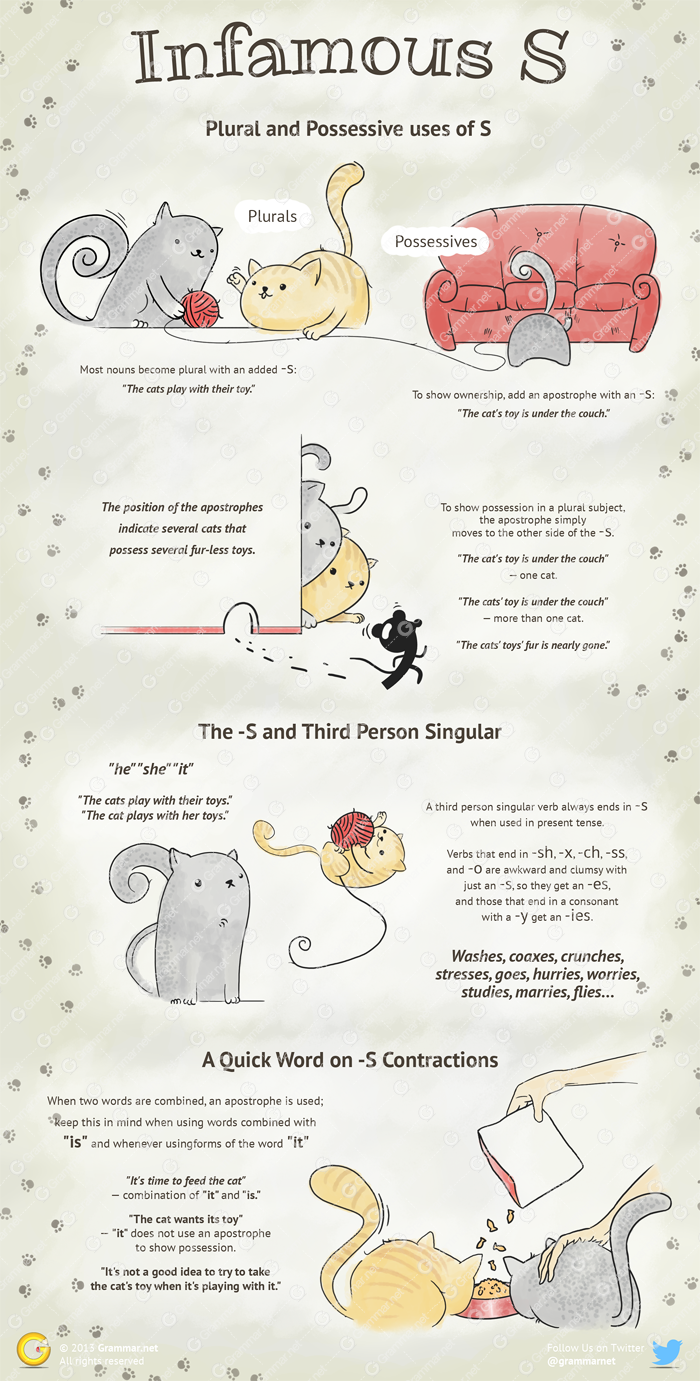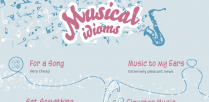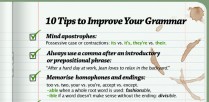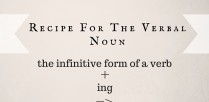The infamous -s has caused endless arguments and agitation. This article and infographic will attempt to clear up the confusion surrounding plurals, possessives, and combinations of the two.
To download high resolution poster click here
Plural and Possessive Uses of -S
Plurals
Most nouns become plural with an added -s: “The cats play with their toy.”
Possessives
To show ownership, add an apostrophe with an -s: “The cat’s toy is under the couch.”
So far, everything is simple, but what happens when several cats lose a toy under the couch? To show possession in a plural subject, the apostrophe simply moves to the other side of the -s.
“The cat’s toy is under the couch”–one cat.
“The cats’ toy is under the couch”–more than one cat.
The apostrophe adds clarity, letting us know whether the noun is plural or singular, depending on where it is. In the first example, chop off that apostrophe and everything after it, and the root is “cat,” while the root in the second example is plural: “cats.”
For a “worst case scenario,” we can say that these cats have several toy mice, and they have played with their mice for so long that the toys have hardly any fur on them.
“The cats’ toys’ fur is nearly gone.”
The position of the apostrophes indicate several cats that possess several fur-less toys.
The -S and Third Person Singular
Third person singular is anything that excludes the speaker and the person spoken to and can be considered a “he,” “she,” or “it.” So far, we have seen multiple cats play with toys, but when the subject of the sentence is a single cat, the -s relocates from the noun to the verb.
“The cats play with their toys.”
“The cat plays with her toys.”
A third person singular verb always ends in -s when used in present tense, but sometimes that -s needs a friend or two. Verbs that end in -sh, -x, -ch, -ss, and -o are awkward and clumsy with just an -s, so they get an -es, and those that end in a consonant with a -y get an -ies. Don’t panic, here are a few examples:
Washes, coaxes, crunches, stresses, goes
Hurries, worries, studies, marries, flies
A Quick Word on -S Contractions
The -s and its apostrophe are very abused, and some of the confusion may stem from contractions. When two words are combined, an apostrophe is used; keep this in mind when using words combined with “is” and whenever using forms of the word “it.”
“It’s time to feed the cat”–combination of “it” and “is.”
“The cat wants its toy”–“it” does not use an apostrophe to show possession.
“It’s not a good idea to try to take the cat’s toy when it’s playing with it.”
“The word ‘it’ is particularly selfish with its unique requirements.”
If you were to discuss a car that belongs to the Jones family, where would you put the apostrophe, or would you even use one at all?



![10 Idioms about Love [infographic]](https://www.grammar.net/wp-content/uploads/2013/03/Love-Idioms_watermarked-308x95.png)
![How to master predicates [infographic]](https://www.grammar.net/wp-content/uploads/2013/05/predicates_web-308x95.jpg)



